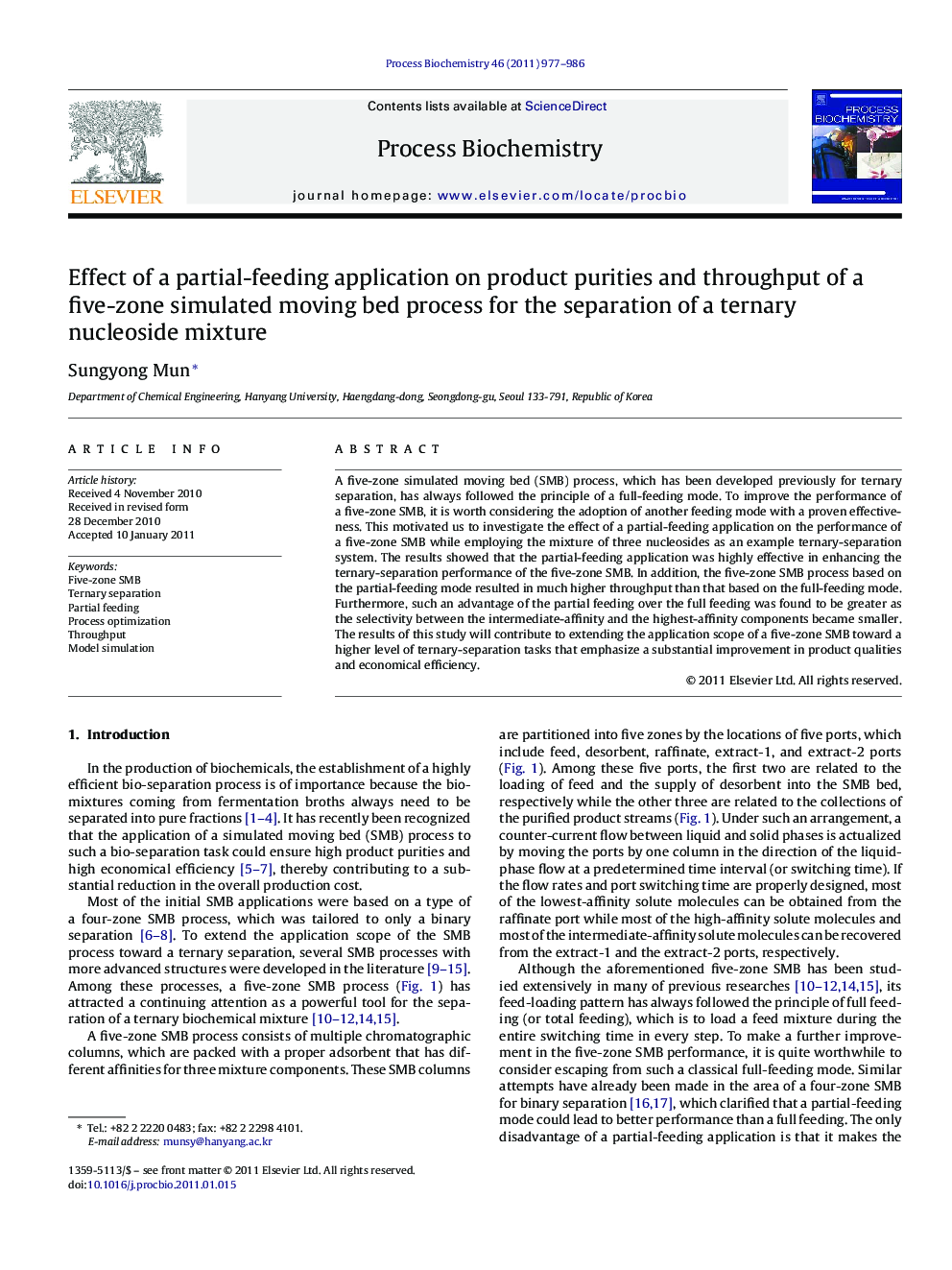| Article ID | Journal | Published Year | Pages | File Type |
|---|---|---|---|---|
| 34886 | Process Biochemistry | 2011 | 10 Pages |
A five-zone simulated moving bed (SMB) process, which has been developed previously for ternary separation, has always followed the principle of a full-feeding mode. To improve the performance of a five-zone SMB, it is worth considering the adoption of another feeding mode with a proven effectiveness. This motivated us to investigate the effect of a partial-feeding application on the performance of a five-zone SMB while employing the mixture of three nucleosides as an example ternary-separation system. The results showed that the partial-feeding application was highly effective in enhancing the ternary-separation performance of the five-zone SMB. In addition, the five-zone SMB process based on the partial-feeding mode resulted in much higher throughput than that based on the full-feeding mode. Furthermore, such an advantage of the partial feeding over the full feeding was found to be greater as the selectivity between the intermediate-affinity and the highest-affinity components became smaller. The results of this study will contribute to extending the application scope of a five-zone SMB toward a higher level of ternary-separation tasks that emphasize a substantial improvement in product qualities and economical efficiency.
